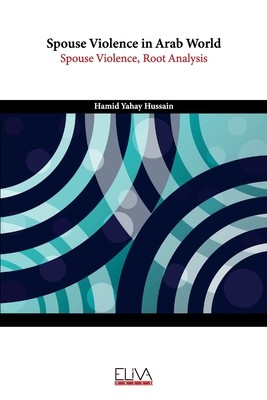
- We will send in 10–14 business days.
- Author: Hamid Yahay Hussain
- Publisher: Eliva Press
- ISBN-10: 1636482953
- ISBN-13: 9781636482958
- Format: 15.2 x 22.9 x 0.3 cm, softcover
- Language: English
- SAVE -10% with code: EXTRA
Reviews
Description
A recent United Nations (UN) analysis highlighted links between violence against women (VAW) in Arab countries and societal factors such as lack of female political and economic participation, discriminatory legal codes, legal impunity for violence against women and girls, and - in some settings - armed conflict and forced displacement. Studies also suggest that rigid gender norms and notions of masculinity embedded in traditional culture contribute to men's use of VAW . Polarizing debates about women's status in the Arab region - between those who argue that traditional interpretations of Islamic doctrine protect women and those who criticize social norms supporting male control over women - make it all the more important to understand levels of VAW in the region. Intimate partner violence (IPV), the most common form of VAW, is widely recognized as a human rights problem that poses a significant threat to women's health and wellbeing - both globally and within the Arab region. In 2013, the World Health Organization (WHO) estimated that 30% of ever-partnered women worldwide had experienced physical or sexual violence by a partner; as had 37% of ever-partnered women in the Eastern Mediterranean region, which covers part of the Arab region . Other than South East Asia, this was the highest estimate of any region, though it was based on data from just four Arab countries (Egypt, Iraq, Jordan and Palestine) plus Iran.All 22 Arab countries agreed to the UN Sustainable Development Goals (SDGs), including Eliminate all forms of violence against all women and girls in public and private spheres.
EXTRA 10 % discount with code: EXTRA
The promotion ends in 20d.05:58:22
The discount code is valid when purchasing from 10 €. Discounts do not stack.
- Author: Hamid Yahay Hussain
- Publisher: Eliva Press
- ISBN-10: 1636482953
- ISBN-13: 9781636482958
- Format: 15.2 x 22.9 x 0.3 cm, softcover
- Language: English English
A recent United Nations (UN) analysis highlighted links between violence against women (VAW) in Arab countries and societal factors such as lack of female political and economic participation, discriminatory legal codes, legal impunity for violence against women and girls, and - in some settings - armed conflict and forced displacement. Studies also suggest that rigid gender norms and notions of masculinity embedded in traditional culture contribute to men's use of VAW . Polarizing debates about women's status in the Arab region - between those who argue that traditional interpretations of Islamic doctrine protect women and those who criticize social norms supporting male control over women - make it all the more important to understand levels of VAW in the region. Intimate partner violence (IPV), the most common form of VAW, is widely recognized as a human rights problem that poses a significant threat to women's health and wellbeing - both globally and within the Arab region. In 2013, the World Health Organization (WHO) estimated that 30% of ever-partnered women worldwide had experienced physical or sexual violence by a partner; as had 37% of ever-partnered women in the Eastern Mediterranean region, which covers part of the Arab region . Other than South East Asia, this was the highest estimate of any region, though it was based on data from just four Arab countries (Egypt, Iraq, Jordan and Palestine) plus Iran.All 22 Arab countries agreed to the UN Sustainable Development Goals (SDGs), including Eliminate all forms of violence against all women and girls in public and private spheres.


Reviews